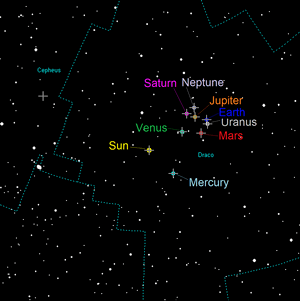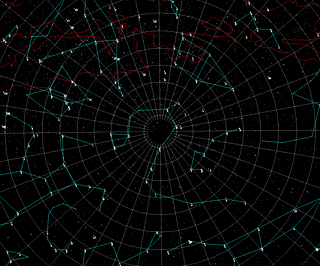Orbital pole

An orbital pole is either point at the ends of an imaginary line segment that runs through the center of an orbit (of a revolving body like a planet) and is perpendicular to the orbital plane. Projected onto the celestial sphere, orbital poles are similar in concept to celestial poles, but are based on the body's orbit instead of its equator.
The north orbital pole of a revolving body is defined by the right-hand rule. If the fingers of the right hand are curved along the direction of orbital motion, with the thumb extended and oriented to be parallel to the orbital axis, then the direction the thumb points is defined to be the orbital north.
The orbital poles of Earth are referred to as the ecliptic poles.
Ecliptic pole
The ecliptic is the plane on which Earth orbits the Sun. The ecliptic poles are the two points where the ecliptic axis, the imaginary line perpendicular to the ecliptic, intersects the celestial sphere.
The two ecliptic poles are mapped below.
 The north ecliptic pole is in Draco. |
 The south ecliptic pole is in Dorado. |
Due to axial precession, either celestial pole completes a circuit around the nearer ecliptic pole every 25,800 years.
As of 1 January 2000, the positions of the ecliptic poles expressed in equatorial coordinates, as a consequence of Earth's axial tilt, are the following:
- North: right ascension 18h 0m 0.0s (exact), declination +66° 33′ 38.55″
- South: right ascension 6h 0m 0.0s (exact), declination −66° 33′ 38.55″
It is impossible anywhere for either ecliptic pole to be at the zenith in the night sky. By definition, the ecliptic poles are located 90° from the Sun's position. Therefore, whenever and wherever either ecliptic pole is directly overhead, the Sun must be on the horizon. The ecliptic poles can contact the zenith only in the Arctic and Antarctic circles.